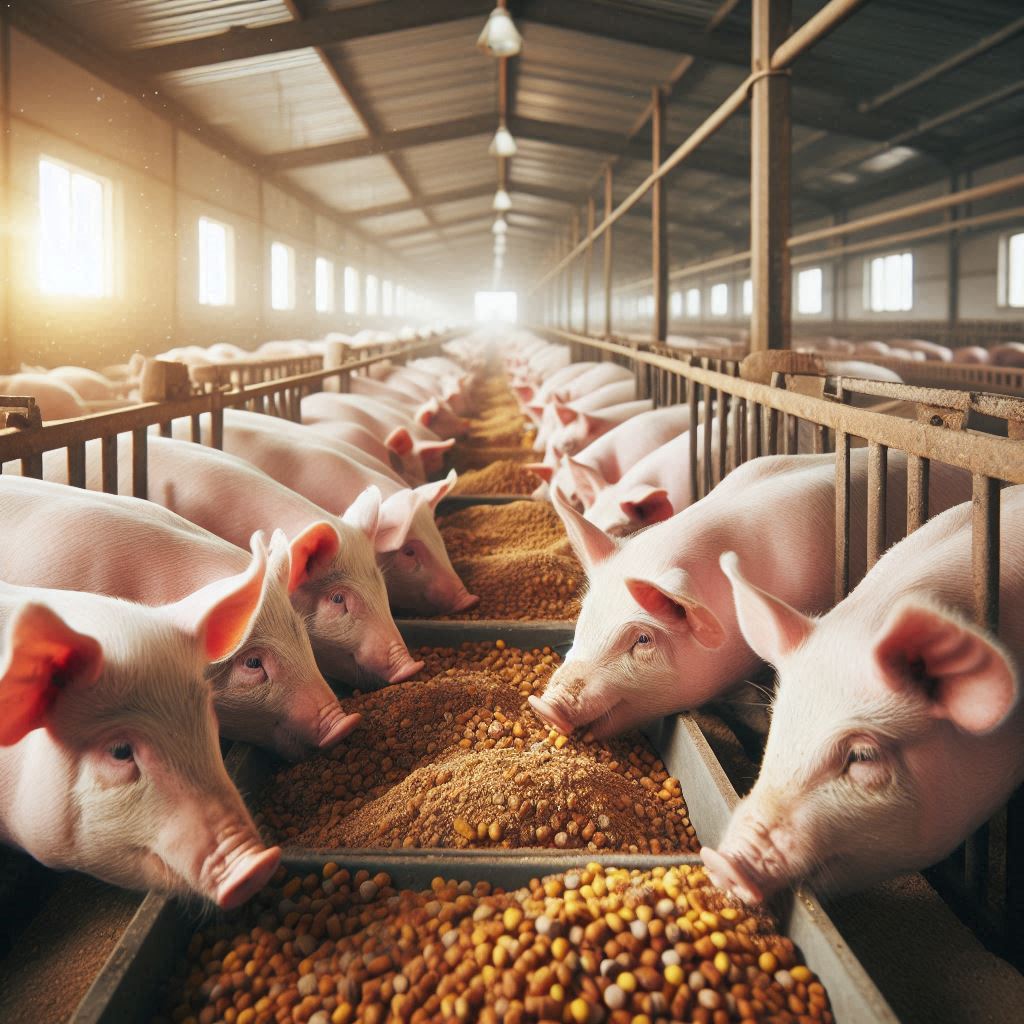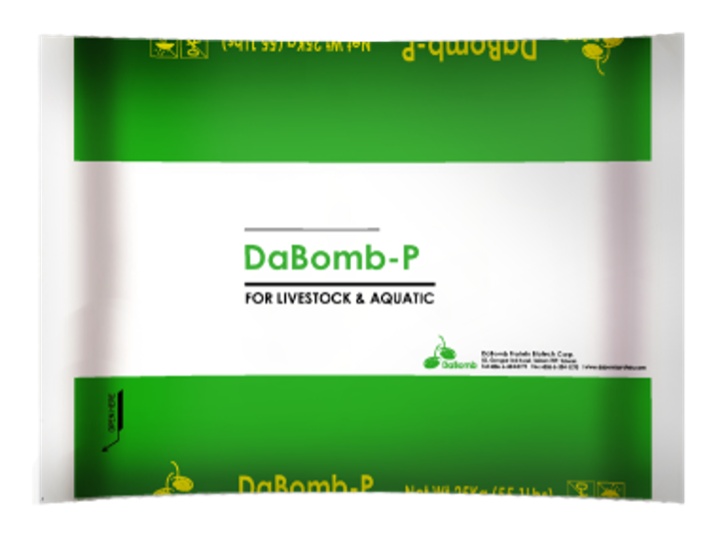Fermented Soybean Meal: A Better Option than Regular Soybean Meal
As the demand for high-quality animal feed is increasing around the world, the search for superior ingredients becomes ever more crucial. In recent years, fermented soybean meal has become as an excellent option, offering many advantages over regular soybean meal. For example, DaBomb-P is a cost-effective and multifunctional postbiotic-enhanced fermented soybean meal, rich in small molecule soy peptides and postbiotics. DaBomb-P offers high protein digestibility, promotes the growth and immunity of animals, and can replace a large amount of fishmeal in feed. This article explored the benefits of fermented soybean meal in depth, focusing on its reduced anti-nutritional factors and higher nutritional value, making it a top choice for economic animal nutrition.
Anti-nutritional Factor Reduction in Fermented Soybean Meal Through Microbial Fermentation
One of the major challenges with regular soybean meal is the presence of anti-nutritional factors (ANFs). These compounds can interfere with the digestion and absorption of nutrients, negatively impacting animal health and growth. Common ANFs in soybean meal include trypsin inhibitors, phytic acid, oligosaccharides, glycinin and β-conglycinin.
The Role of Microbial Fermentation
Microbial fermentation is a powerful process that transforms regular soybean meal into a more digestible and nutritious product. During fermentation, beneficial microorganisms such as bacteria, yeast, and fungi break down complex compounds, effectively reducing the levels of ANFs.
- Reduction of Trypsin Inhibitors: Trypsin inhibitors interfere with protein digestion by inhibiting the action of trypsin, a crucial digestive enzyme. In the feed industry, heat treatment can greatly reduce these inhibitors, enhancing the protein digestibility of the soy protein.
- Phytic Acid Breakdown: Phytic acid binds essential minerals like calcium, magnesium, and zinc, making them unavailable for absorption. Microbial fermentation breaks down phytic acid, thereby increasing the bioavailability of these crucial minerals.
- Degradation of Oligosaccharides: Oligosaccharides, such as raffinose and stachyose, can cause digestive disorder in animals. Fermentation breaks down these saccharides, reducing gastrointestinal problems and improving overall feed efficiency.
- Elimination of Glycinin and β-conglycinin: Glycinin and β-conglycinin are common allergenic proteins in soybeans, which are known to cause inflammatory reactions and damage the intestinal integrity of animals. Microbial fermentation can reduce the levels of these allergenic proteins, thereby improving intestinal absorption and enhancing animal growth performance.
Practical impacts on Livestock and Aquaculture Animals
By reducing ANFs, fermented soybean meal enhances the overall digestibility and nutrient absorption. This leads to several practical benefits:
- Improved Growth Rates: Animals fed with fermented soybean meal show better growth rates compared to those on regular soybean meal diets.
- Enhanced Feed Efficiency: The improved digestibility means that animals require less feed to achieve the same growth performance, reducing feed costs.
- Better Gut Health: Lower levels of ANFs contribute to a healthier gut microbiota, reducing the incidence of digestive disorders and enhancing overall animal health.
Many antinutritional factors such as oligosaccharides, glycinin and β-conglycinin have been reduced to very low levels in fermented soybean meal DaBomb-P. In animal trials, replacing partial fishmeal in the feed with soybean meal causes villus inflammation in groupers and hepatopancreatic cell necrosis in white shrimp. However, using DaBomb-P does not cause these issues.

Fermented Soybean Meal: Higher Nutritional Value Soy Protein
Another attractive advantage of fermented soybean meal is its enhanced nutritional profile. The fermentation process not only reduces ANFs but also enriches the feed with beneficial nutrients and bioactive compounds.
Enhanced Soy Protein Quality
Fermented soybean meal contains a high level of soy protein that offers superior protein quality compared to soybean meal. This improvement is due to several factors:
- Increased Amino Acid Availability: Fermentation breaks down proteins into smaller peptides and free amino acids, making them easier for absorption. This results in a higher biological value of the soy protein.
- Synthesis of Bioactive Peptides: During fermentation, microorganisms produce bioactive peptides that have various health benefits, including antimicrobial, antioxidant, and immune-modulating properties.
- Improved Protein Digestibility: The fermentation process pre-digests some of the protein components, enhancing the overall digestibility and making it easier for animals to utilize the protein effectively. Such as the fermented soybean meal DaBomb-P, which has a protein digestibility around 95% in broilers and swine, and higher than 80% and 90% in shrimp and groupers, respectively.
Additional Nutritional Benefits
In addition to improved protein quality, fermented soybean meal offers several other nutritional advantages:
- Vitamins and Minerals: Fermentation can increase the levels of certain vitamins (e.g., B vitamins) and minerals, contributing to a more balanced and nutritious feed.
- Probiotic Metabolites: The fermentation process produces beneficial probiotic metabolites, postbiotics, such as organic acids and bacteriocins, which can improve gut health and enhance the immune system of the animals. These metabolites help maintain a healthy gut microbiota by inhibiting the growth of harmful microorganisms.
- Improved Palatability: Microbial fermentation enhances the taste and scent of the soybean meal, making it more palatable to livestock, which can increase feed intake and improve growth performance.
Application in Various Economic Animal Diets
The benefits of fermented soybean meal make it a valuable ingredient across different animals diets:
- Poultry: Chickens and other poultry benefit from the improved protein quality and reduced ANFs, leading to better growth rates and feed conversion ratios.
- Swine: Piglets, in particular, show significant improvements in growth performance and gut health when fed fermented soybean meal, as it is gentler on their digestive systems.
- Aquaculture: Fish and shrimp benefit from the high digestibility and nutrient availability of fermented soybean meal, promoting better growth and reducing the negative impact of ammonia on the aquaculture environment.
- Ruminants: Although ruminants can handle some ANFs due to their complex digestive systems, fermented soybean meal can still enhance overall nutrient absorption and health.
Benefits of Fermented Soybean Meal for Livestock and Aquaculture Animals
The benefits of fermented soybean meal for livestock and aquaculture animals are great and multiple. By adopting this advanced feed ingredient, animal producers can achieve:
- Enhanced Growth Performance: Improved nutrient absorption and digestibility lead to better growth rates and overall animal performance.
- Cost Efficiency: Higher feed efficiency means lower feed costs, providing economic benefits to industry.
- Better Health and Welfare: Reduced digestive problems and improved gut health contribute to the overall well-being of the animals, reducing economic losses to the animal producers.
- Sustainability: Enhanced feed efficiency and nutrient utilization can lead to more sustainable production practices, meeting with the growing demand for environmentally responsible agriculture.
In both livestock and aquatic animal feed applications, DaBomb-P, which is enriched with small molecule soy peptides and Lactobacillus postbiotics, has been found to inhibit inflammation, enhance disease resistance, improve survival rates, optimize feed efficiency, and shorten feeding periods. More importantly, it can replace partial fishmeal while maintaining growth performance, which in turn helps to save feeding costs.

Conclusion
Fermented soybean meal is a superior alternative to regular soybean meal, offering many benefits that make it an attractive choice for livestock and aquaculture animal nutrition. Through microbial fermentation, anti-nutritional factors are significantly reduced, and the nutritional value of the soy protein is enhanced. These advantages translate into better growth performance, improved feed efficiency, and overall healthier livestock and aquaculture.
Incorporating fermented soybean meal into feeds can lead to significant improvements in animal health and productivity. As the agricultural industry continues to evolve, adopting innovative feed ingredients like fermented soybean meal will be key to meeting the nutritional needs of economic animals and ensuring sustainable and efficient farming practices.
In short, fermented soybean meal represents a great advancement in animal nutrition and offers a viable alternative to traditional soybean meal. DaBomb Protein Biotech Corp.'s fermented soybean meal, DaBomb-P, is catalyzed by Lactobacillus to produce a very low level of anti-nutritional factors, more hydrolyzed peptides, higher soy protein digestibility, and more lactic acid to inhibit harmful microorganisms and increase palatability when compared to soybean meal. The microbial fermentation process enhances nutritional quality, improves digestibility, and reduces anti-nutritional factors, making DaBomb-P a safer and more efficient feed choice for economic animals.
Reference
- Cheng, W., & Lin YuHung, L. Y. (2016). Multiple functions of Lactobacillus spp. fermented soybean meal in aquafeed.
- Zhuo, L. C., Liu, K., & Lin, Y. H. (2016). Apparent digestibility of soybean meal and Lactobacillus spp. fermented soybean meal in diets of grouper, Epinephelus coioides. Aquaculture Research, 47(3), 1009-1012.
- Zhuo, L., Liu, K., & Lin, Y. H. (2014). Fermentation by Lactobacillus spp. can improve apparent digestibility and hydrolyze the protein of soybean meal for white shrimp Litopenaeus vannamei. Journal of the Fisheries Society of Taiwan, 41(2), 117-122.
- Lin, Y. H., & Chen, Y. T. (2022). Lactobacillus spp. fermented soybean meal partially substitution to fish meal enhances innate immune responses and nutrient digestibility of white shrimp (Litopenaeus vannamei) fed diet with low fish meal. Aquaculture, 548, 737634.
- Lin, Y. H., & Mui, J. J. (2017). Comparison of dietary inclusion of commercial and fermented soybean meal on oxidative status and non-specific immune responses in white shrimp, Litopenaeus vannamei. Fish & Shellfish Immunology, 63, 208-212.
